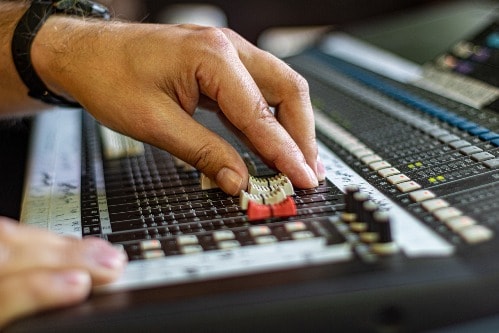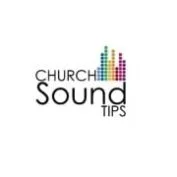One of the first things you should think of if you want to achieve good sound without annoying your listeners and blowing your speakers is proper bass guitar adjustment. After gain setup, you’ll have to know something about EQing your bass. Things are not as simple as you think. Like, plug the bass, tweak a bit eq knobs and rock on. No, no. That is not how you can achieve the awesome punchy bass sound that moves your chest. First things first, look around you, if you are in the room and there are ceramics, glass, in other words, flat surfaces you or your audio engineer should put a lot of effort into making your sound good enough.
If your stage is outside, there will be also some difficulties making a good and powerful sound of your bass guitar. After all, the most important thing is PA equipment on which you are going to perform. You can’t expect loudness and enough power at the low frequencies without mighty subs. Let’s say you have some decent equipment so we can explain to you in detail on how to EQ and mix your bass guitar for live performance. By the way, all of these tips and tricks can be applied in studio mixing whether you are going to plug your bass directly in the mixer or planning to mic the amp. There will also be some crossover with techniques you might use when mixing an electric guitar live or an acoustic guitar.
You can probably find on the internet that if you boost 300hz you’ll achieve that, if you cut 700hz you will get that…forget about generalizing these things. Each bass guitar has a specific tone. You can’t use the same settings for 4 string and 5 string bass, with different (active or passive) pickups and expect them to sound the same. It is just impossible. These numbers don’t mean they will be perfect for your bass guitar. They are just a placeholder, so you should still fine-tune and find the sweet spot for your bass.
Best EQ settings for bass
If you are micing the amp you’ll have to think of the proper placement of that mic, room, gain, etc. Yeah, it is much easier to go directly to the mixer. Some of the older musicians would say, “Hey, just turn your bass knob up and you’ll get that bass punch”. It could work, but not with any bass guitar, not with any PA system. They just get used to vintage equipment and don’t understand the definition and clarity that new PA systems can provide you with.
First thing first, adjust your gain. Second, you don’t need anything above 5khz so you can freely cut everything above that frequency. As we mentioned before, you’ll need some big speakers to drive your bass as you would like. If your speakers can’t handle below 80hz, we recommend you to cut it! Boosting from 80hz to 100hz will help you to achieve bass that will knock your chest. Find it!
Punchy bass will also require cutting some of the frequencies. Maybe you’ve noticed that sometimes, on some stages or in clubs, frequency, usually from 120hz to 130hz is making such a mess with your bass, guitar, and kick drum. It can be so annoying. You can’t cut it to the floor, don’t do that, you will lose some of the vibe that your bass is producing. Find a spot where your bass will not leave a muddy, long tail note and still own its definition.
How to fix a muddy mix
You are not the only one who struggles with the muddy mix. There are a couple of tricks to prevent that muddiness that makes your instrument sound thrashy. First of all, you can cut everything below 40hz. You won’t need it, ever, especially in live performance. Basically, all of the main muddiness runs from 200hz -500hz and you should find your dirt. Also, if you play note by note, you can hear that there will be at least one that will dominate others as well as other instruments. It will be of great improvement to the overall mix if you cut the frequency of the tones that are dominating. Somehow, that crazy tone always swims in the 120hz -130hz frequency range.

How to mix bass guitar with kick drum
Don’t let kick and bass fight over who will take the lead in the mix, let them work together. We know that you’ve probably heard this phrase a million times and you need a concrete solution for making the bass and kick flow smoothly together. Like everything else in music, there is no specific rule on how to do this. It is up to the engineer’s choice and genre you play. If you EQ both, kick and bass similarly they are going to fight each other for the room in the mix.
Your EQing choice and level adjustment should depend on which one you’ve chosen to lead the low-end space. We recommend EQing the bass and kick opposite one another. For example, if you boost kick at 60hz – 80hz, you should pay attention and not let the bass dominate in these frequencies. If you add 700hz to the bass guitar cutting the kick at the same frequency will give bass enough room to work properly and express itself. The main point is just to make sure these two aren’t competing for space in the mix.
Equalisation with a high pass filter
We think that you will be more than surprised and satisfied with your sound using an HPF (high pass filter). Some of you might find your instrument sound tinny…Again, it all depends on PA system you play on. Every mixer has HPF and it usually cuts everything below 80hz. If you could manage to cut everything below 60-70hz it would be perfect. It will cut all the sub-bass rumble that you don’t need at all. You’ll still have that mighty sub and mid-definition. Keep in mind that frequencies in the range of 60hz -80hz are crucial for making the perfect low-end mix.
Main frequency ranges for bass
60 – 200hz:
Bass area. Boosting in this range will add depth and body, defining the low end and making your sound rich and powerful.
120hz – 200hz:
Problem area. We recommend you use a parametric or graphic EQ for a precise cut of problematic frequencies.
200hz – 500hz:
Muddy area. If you notice your bass guitar needs more clarity, just cut some frequencies in this range.
500hz – 1000hz:
Mids area. 500-600hz will provide you with fatness while upper frequencies will give you note definition.
2.5khz – 6 khz:
Attack area. Boosting in this range will give your bass more presence, bite, and clarity.
Using a low pass filter
Feel free to use LPF (low pass filter) to cut everything above 5-6khz on your bass guitar channel. You really don’t need that in your mix. In that range, you only can hear things you don’t want to hear, like squeaking strings and buzz…
Using a pedal or DI box
A bass eq pedal is a good option and will usually double up as a DI box. If you don’t have a pedal, as simple DI box is still a good choice in any case. It will convert an instrument’s high-impedance, unbalanced signal to a low-impedance, balanced signal, and most importantly is that it will provide you with the full range of your bass guitar’s frequency response. Also, there will be less hum, buzz, and feedback.
Equalising sound from a miked speaker cab
There is no such thing that can replace a good bass amp. If you want to EQ bass guitar with a miked amp, prepare yourself for some experimenting. First, think about is your environment good enough for that job. Second, do you have a decent mic and do you know how to set it properly? If the answer to these questions is “yes”, then you are ready for it. EQing bass with a miked amp won’t differ from regular EQing. The main advantage of the miking amp is that sometimes you don’t need to touch EQ on your mixer. Also, a cool trick is that you can mix that miked amp signal with the DI signal and make your bass sound extraordinary.
Sources:
https://www.nytimes.com/wirecutter/blog/should-you-have-your-guitar-or-bass-professionally-set-up/

Leave a Reply